The heating system in a house performs one of the main functions during the construction and improvement of a home. The comfort of living and protection from the cold depends on the correct distribution of heat. Moreover, heating prevents dampness and the development of mold and mildew in the house. Therefore, the organization of the heating system should be thought through in detail.
Before you start building or renovating a house, you need to choose a heating system that suits you. Ease of installation, ease of use and comfortable temperature in the house will depend on it. And before installation, be sure to make calculations and draw up a project that will help install the system correctly and efficiently. Experts online store Foreman. Shop understand heating devices and their correct installation, and share instructions.
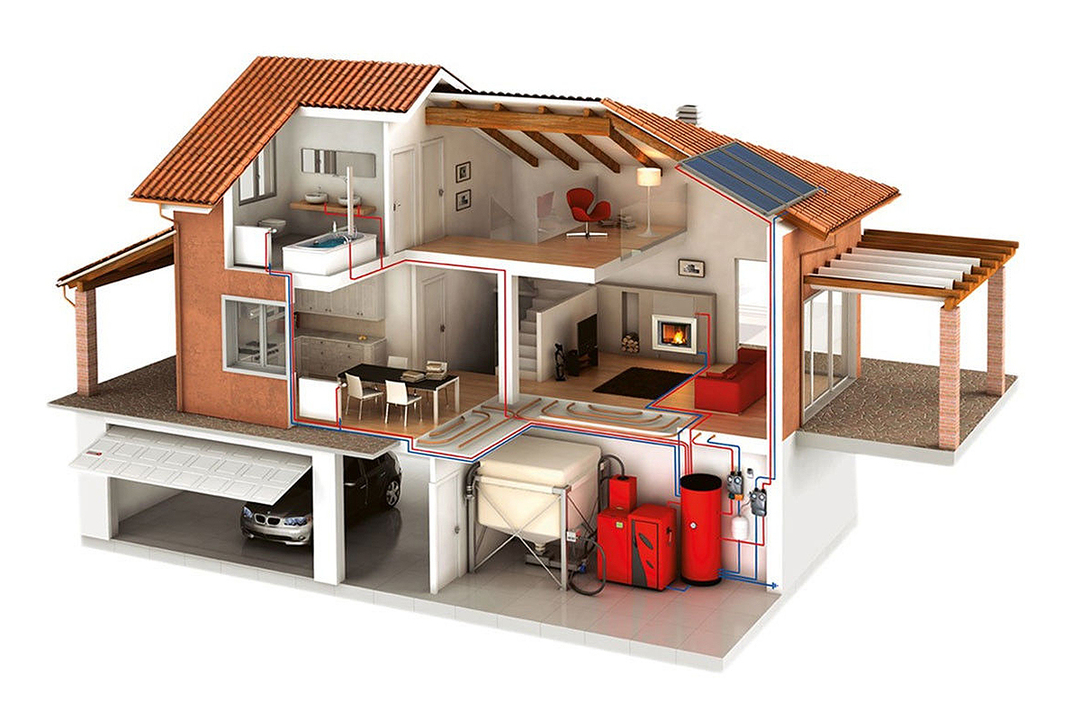
In this article you will learn what types of heating systems there are and how to choose the right one, what devices are needed to install the system and how to install it correctly.
How to choose the type of heating for your home
If you plan to install heating in your own home, you will have to take care of the entire system yourself. Indeed, in the case of autonomous heating, you need to constantly regulate the level of heat, in contrast to centralized heating, when it is transferred to the apartment automatically.
There are several heating systems, and choosing “yours” should be approached responsibly. It is optimal to select the type according to criteria such as automation, reliability and wear resistance. And of course, the system must be suitable for the home in terms of operational characteristics. Here are the features of each type of heating system.
- Air heating. In this case, air is passed through the heating unit. It warms up or cools down until the required temperature is achieved in the room. But the air duct is very bulky in size, so it is only suitable for a large house.
- Steam heating. This type works by burning coal or wood and heating water in a tank. Once the water is heated, it turns into steam and heats the batteries, causing the pipes to quickly release heat. Steam heating is suitable if fuel materials are constantly available and ready to interact with them.
- Gas heating. In the case of autonomous heating, it is often necessary to install gas boilers, which are tanks with liquefied gas. Their use does not require heating materials, but they provide uniform heating of rooms. However, you should be prepared for complex and lengthy installation.
- Electric heating. This kindcarried out using electrical appliances such as radiators, convectors and infrared installations. This also includes warm floor. The system is easy to use and the most automated of all, but you must be prepared to pay more for electricity.
- Stove heating. A stove is installed here, sometimes combined with a fireplace. It is made of bricks, coated with clay, and heated with coal and wood. This is a completely independent and natural type of heating, but for its design you need to allocate a special place in the house and think through the chimney. And also be prepared for the constant purchase of fuel materials and ash cleaning.
- Solar panels. A type of heating that is gaining popularity and is considered the most environmentally friendly. To collect and distribute solar energy, special convectors are used here, which are easy to install and convenient to use. However, they depend on the weather and solar activity, so this type of heating is more suitable for southern regions.
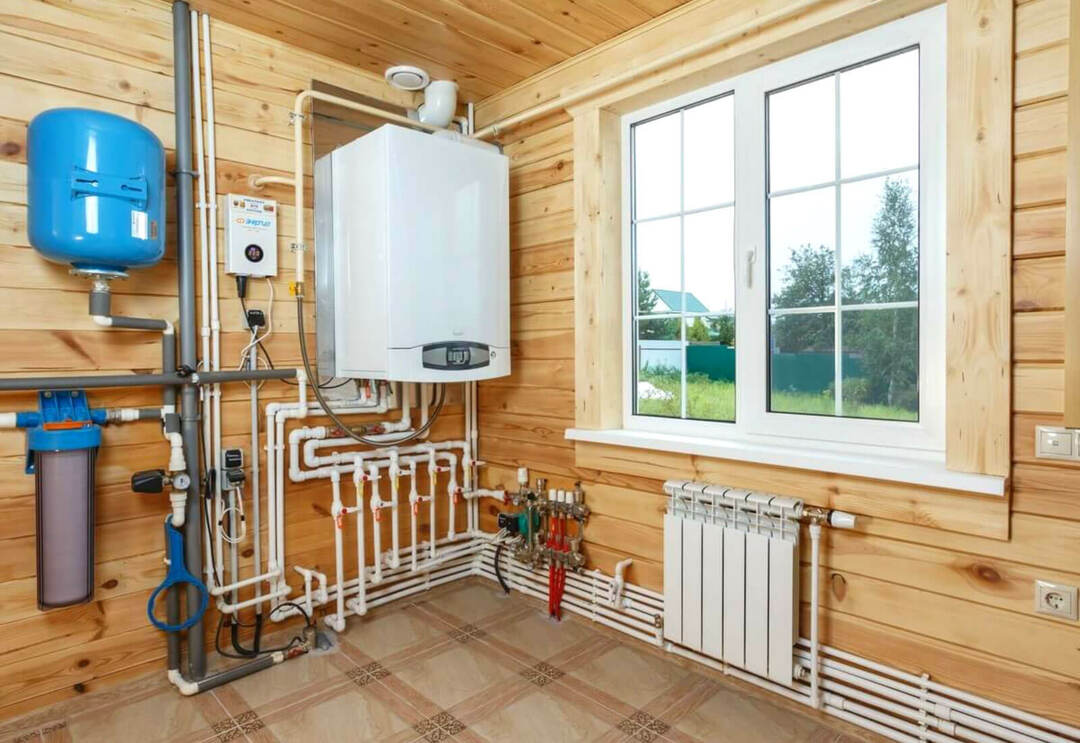
There is another type of heating - water. It is the most functional, as it can be connected to both autonomous and centralized heating. And therefore the demand for this system is higher. Another advantage of water heating is its simple installation, which you can do yourself. The specialists of the Foreman store talk about how to do this in this article.
What components are needed to install a water heating system?
Water heating operates on a closed cycle system. The liquid heated in the boiler is supplied to the radiators and gives off its temperature, and then, independently or with the help of pumps, returns to the boiler. These types of equipment are the minimum set of what is needed to install the system.
Here are the elements needed to install a water system.
Heating boilers
The functionality and efficiency of heating a home depends on this device. The operating principle is such that the coolant is heated while passing through the heating circuit. Then the hot flows are directed through the pipework, which heats all the rooms where it passes.
Manufacturers offer equipment that runs on different types of fuel. For example, on gas, solid or diesel fuel. However, the most convenient type of boiler is electric water heater, which runs on electricity and is fully automated.
Pipes
This is the component of the heating system through which heated water moves and heats all rooms. Typically, polymer pipes are used, which are considered the most reliable. Some people choose copper as the material, which is the most durable. They rarely give preference to metal and metal-plastic pipes, since at elevated temperatures there is a possibility of cracking and corrosion.
Radiators
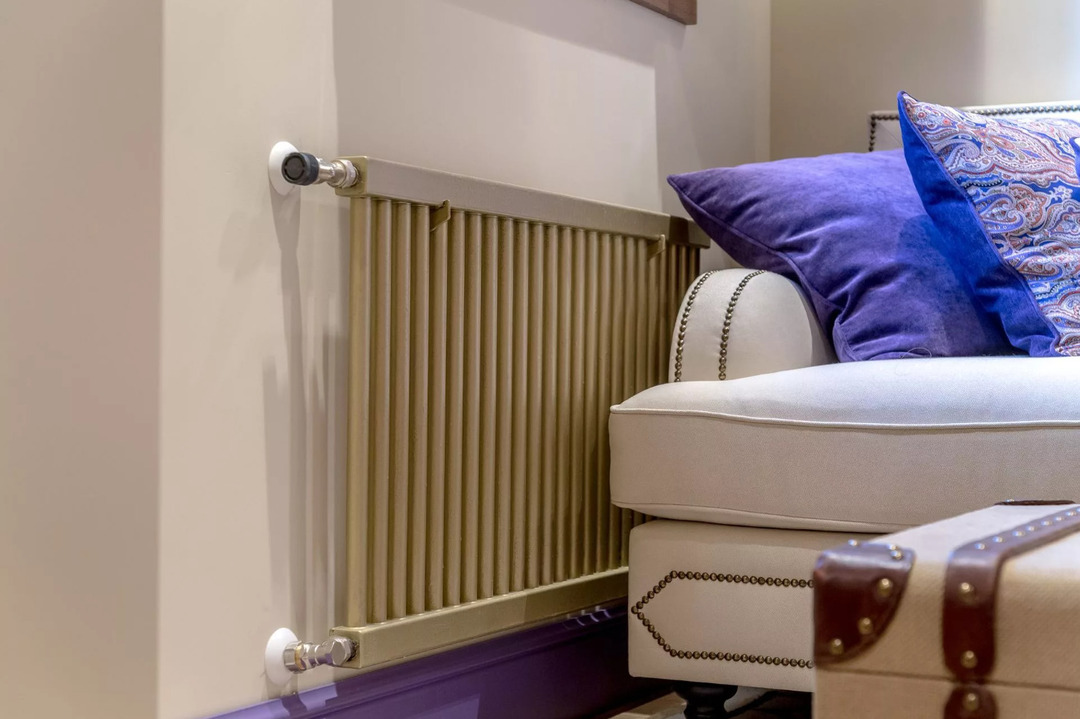
The main task of heating radiators is to transfer the heat carried by the coolant. The area of the battery should be optimal to completely heat the room. Therefore, it is important to select such a number of sections that they are enough for the area of the room.
By material radiators are different. For example, cast iron batteries retain heat for a long time, but take a long time to heat up, while aluminum batteries give off the most thermal energy, but are highly susceptible to corrosion. As a golden mean, preference is often given to bimetallic or steel structures.
Expansion tank
Another element, which is a metal container attached to the heating system. An expansion tank is needed to create a reserve volume of liquid in case of leakage. In situations where the coolant pressure in the network is below acceptable parameters, liquid is taken from the system. This allows you to maintain its uninterrupted operation.
Another purpose of the expansion tank is to prevent pipes from bursting. When the pressure increases, the coolant first enters the tank, which transfers liquid to the system through a safety valve. This “dosing” allows you to keep the operation of the system under control.
Circulating water pump
With the help of a pump, liquid will pass through the pipes at a given speed. Pressure is created inside the pipework, which increases the speed of water movement. This forces the coolant to be evenly distributed over the radiators and prevents the boiler from overheating when the liquid moves slowly.
The pump is selected based on its technological properties. Thus, a device with high power will accelerate the circulation of liquid without having time to heat up. And pumps with low power will not cope with the volume of liquid, slowing down the circulation of the coolant and cooling the room.
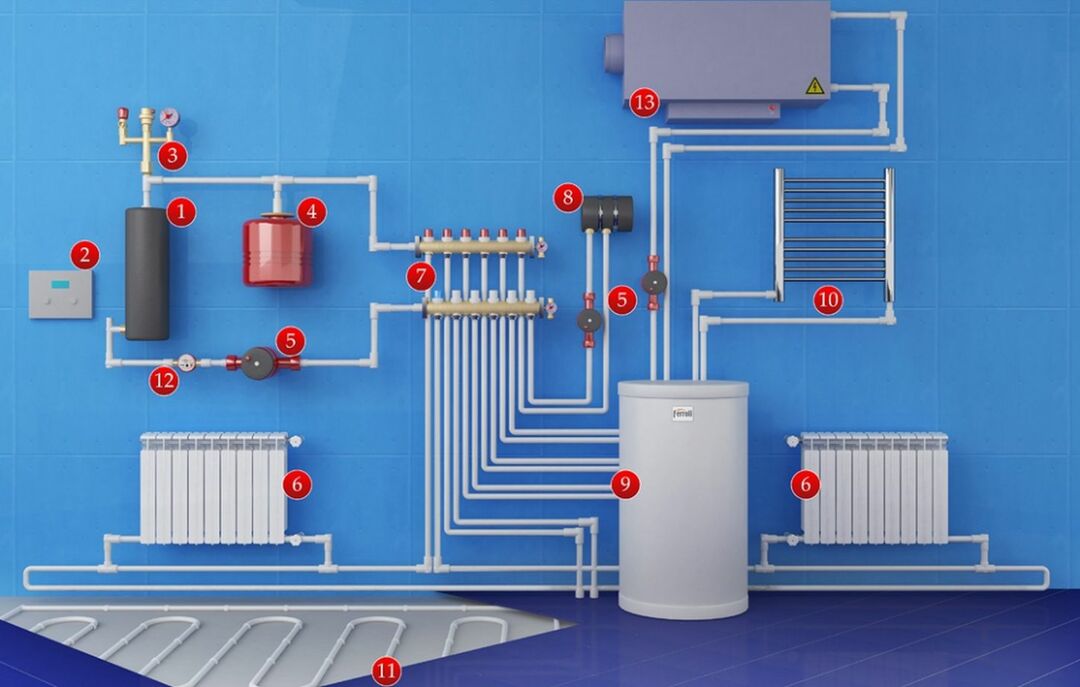
How to install water heating in a house
For stable operation of a water heating system, only a few components are needed to circulate water. The system is easy to use, as it is automated after connection and does not require fuel materials. Installing water heating is simple if you follow the algorithm.
Here are the steps you need to follow in order to properly install water heating in your home, according to the Foreman store. Shop.
Step 1: design and calculations
The design stage includes a detailed drawing up of a heating system diagram. Namely - finding the boiler, laying pipes, determining the size of radiators. At this step, it is necessary to make calculations of heat loss, which show how much thermal energy a house can lose if the required thermal conditions are observed. To calculate the indicators, it is necessary to take into account the parameters of the house, thermal conductivity building materials and climate of the construction region.
Heat loss is considered “to the maximum”: how much a building can lose if it is in the minimum temperature conditions. Based on this, it is necessary to calculate heat losses, select the optimal temperature, and also calculate the power of radiators and hydraulic calculations. All this can be done in special online calculators. Based on the data obtained, you can already select and purchase equipment for installation.
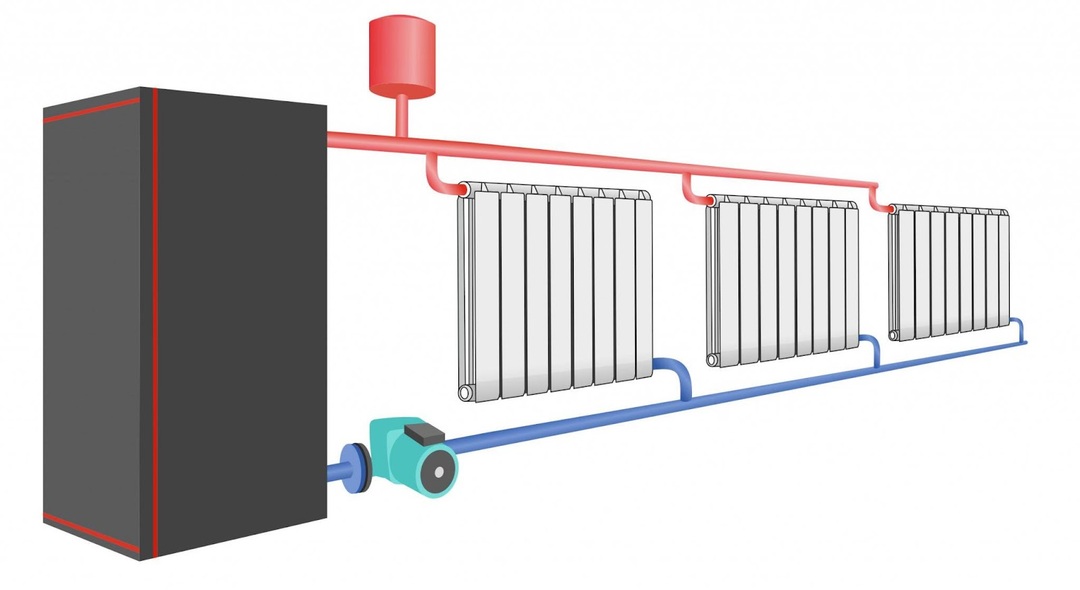
Step 2: Radiator Installation
Typically, connecting a heating system begins with the installation of radiators, which first need to be assembled in sections. To do this, use components for the radiator, with which the structure is mounted on the wall. And after assembly, the fittings from the kit are screwed into the threaded holes of the radiators. Then the valves are screwed into them using medium-fix sealants, and after they dry, the surface is cleaned of excess contaminants.
The next step is to attach the finished radiator to the wall. Before this, you need to prepare the surface: mark the positions of the radiator parts using a laser level, drill holes in the wall with a hammer drill for the passage of lines and install brackets. Then the radiators are hung on brackets, and after that you can start connecting the pipes.
Step 3: pipe installation
Installation plumbing pipes in rooms it begins with screwing the radiator fittings into the fitting. Then the required section of pipe is measured and cut, onto which tubular thermal insulation is placed, and soldering is performed. The soldered assembly together with the fittings is screwed onto the radiator, and then the position of the pipes in the groove is checked. This procedure must be done until the entire assembly is soldered to the main line.
After all the nodes are soldered, they need to be connected to the main line. Next, you need to attach thermal insulation to them and attach the pipes to the floor using a perforated mounting strip. Where the lines pass through the walls, sleeves are made, and pipes with thermal insulation are fixed in them using polyurethane foam. Then the pipes are discharged into the boiler room.
Step 4: boiler room equipment
Installation of the boiler, expansion tank and pump is carried out after finishing work. When using a floor-standing boiler, pre-equip a podium for it. After the boiler is installed, the installation of the remaining boiler equipment begins: expansion tanks, water pumps and other devices provided for in the project.
Then all boiler equipment is connected with metal pipes. Here you need to take into account the safety of the boiler, automatic air vents, dirt filters in front of the pumps, check valves, as well as thermometers on each circuit. After installing the pumping and mixing group, they are connected to the forward and return lines using polymer pipes.
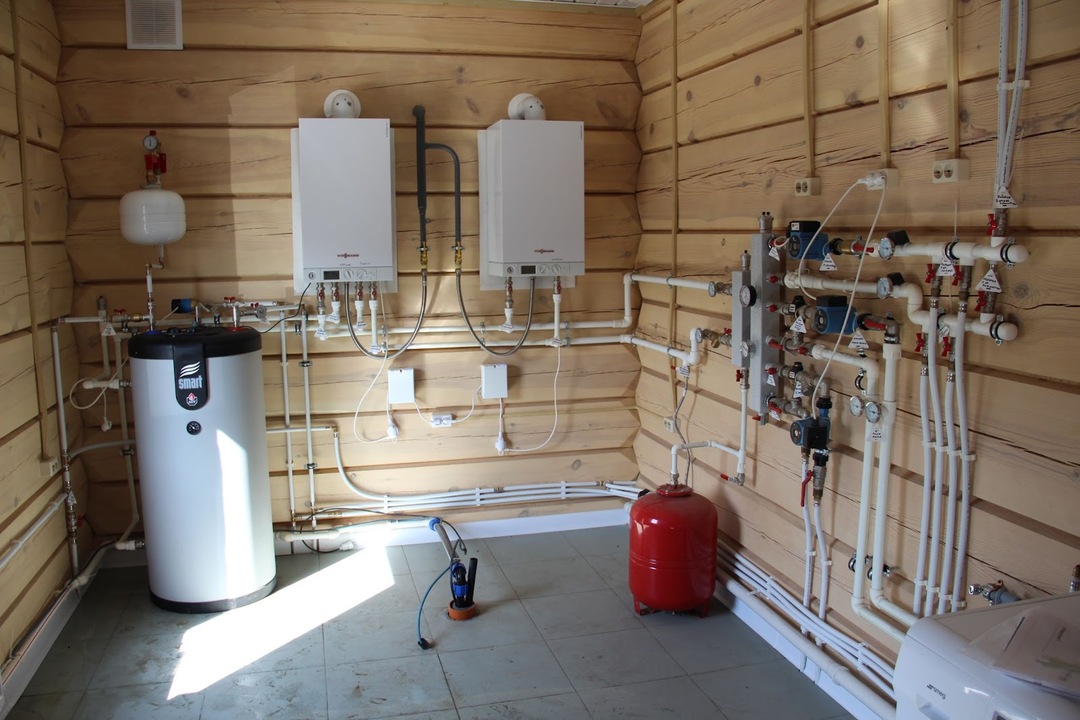
Step 5: System Testing
The heating system is tested in all modes. After the lines have been laid and all radiator connections have been made, they are checked for quality. To do this, a pressure test pump is connected to the circuit through the shut-off valve, clean water is poured in, and the pressure in the circuit is raised. If it drops quickly, it means there is a leak that needs to be found and fixed.
As for the boiler, the heating system is also filled with water and air is released using automatic air vents. Then raise the pressure in the system and inspect the joints. If the pressure remains stable at this level, then the water is drained.
Among the types of heating systems presented, you need to choose the one that is most suitable for the climate of the region, the type of house and personal preferences. But it is better to choose an automated system, such as a water system - it is easy to install and convenient to operate. You can install it yourself if you follow the installation algorithm. The main thing is to make the calculations correctly and draw up a detailed plan and diagram for organizing the system.
If you are going to install a water heating system in your home, then contact online store Foreman. Here you will find high quality radiators, water heaters and pipes. The store also offers components for radiators, threaded connections and fittings that will be useful during the installation of equipment.



